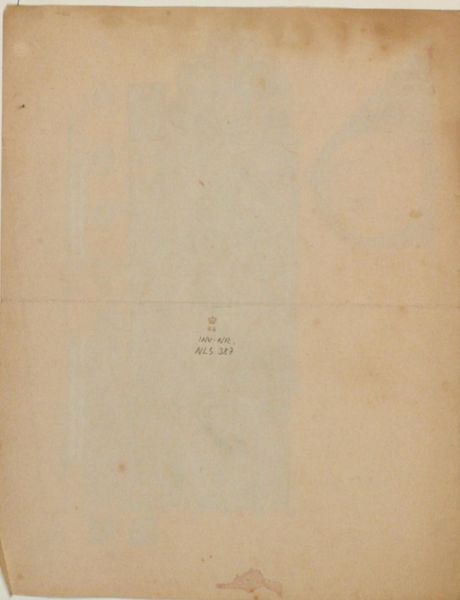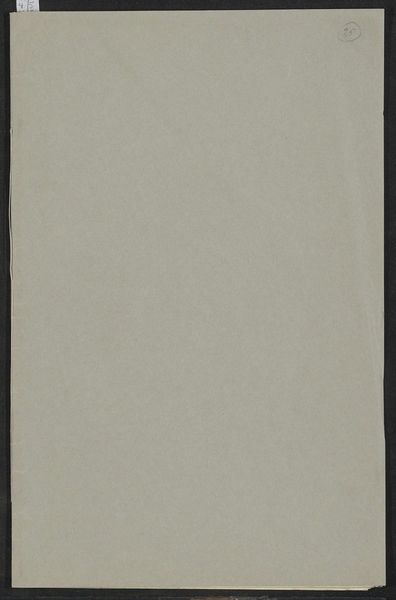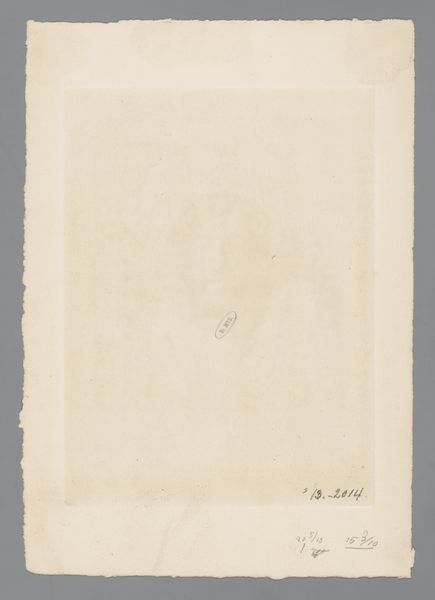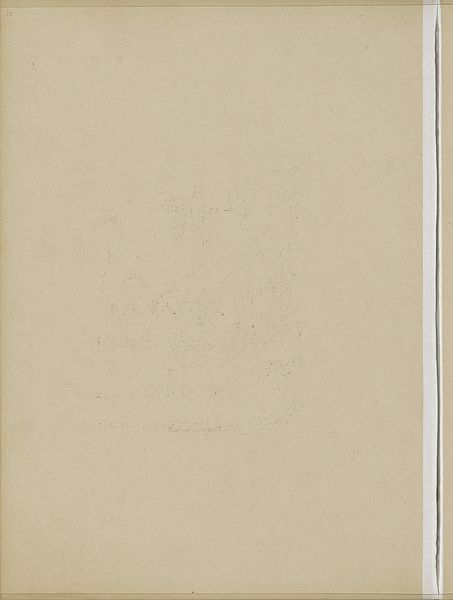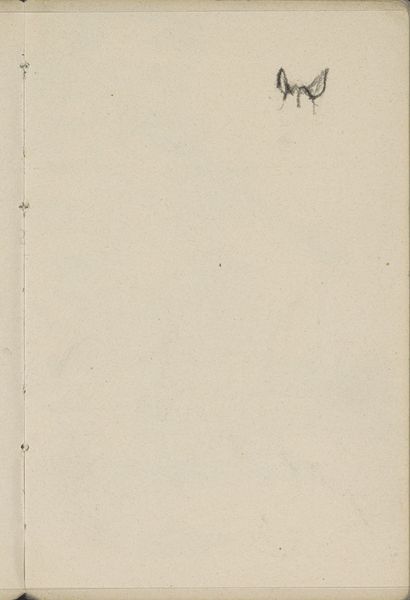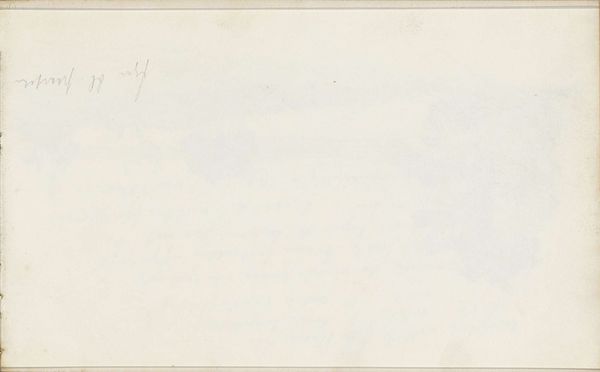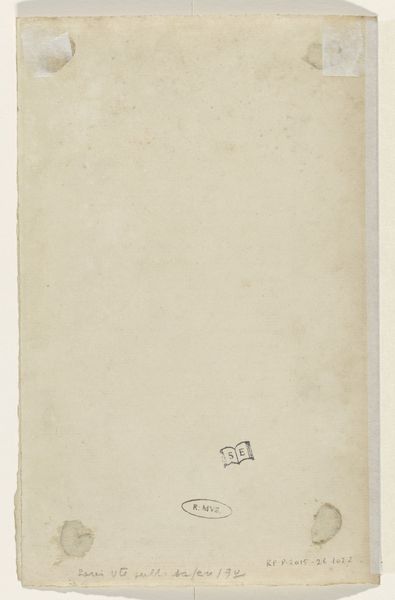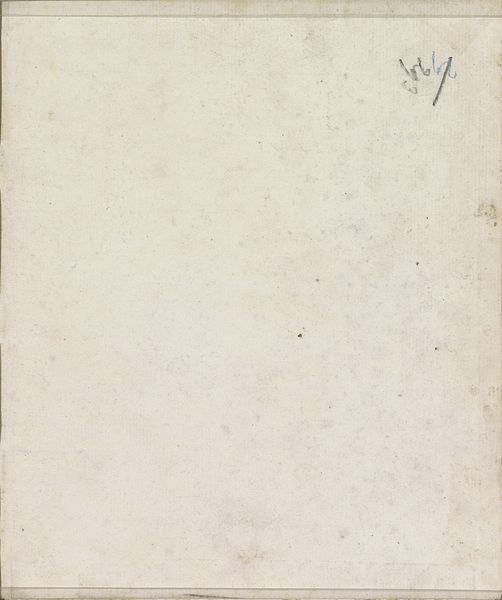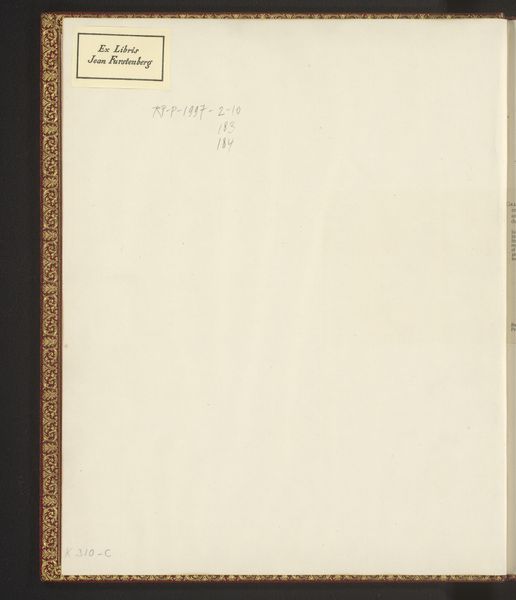
Dimensions: 356 mm (height) x 242 mm (width) (bladmaal)
Editor: This is "Blank," a drawing from between 1902 and 1905 by Niels Larsen Stevns. It appears to be ink on paper, a monochromatic work. What strikes me is its...emptiness. What can we learn from the absence of a representational image? Curator: What's compelling here is the raw presentation of material. Ink and paper; mass-produced supports meeting a specific pigment. Ask yourself: What social circumstances permitted Stevns the *luxury* of exploring non-representation? Was the work itself a critique of the commodity culture taking hold at the time, a rejection of artistic product in favor of simple artistic *process*? Editor: So, you're suggesting the "blankness" is a deliberate statement about the art world? A commentary on the production and consumption of art itself? Curator: Precisely. It asks us to consider art beyond its representational function, prompting reflection on labor and artistic intent. What does it *mean* to produce a "blank" artwork during this period? It's a disruption of expectation. Editor: That’s a fascinating take. I initially saw it as simply unfinished or perhaps a failed sketch, but understanding the context of its creation really transforms its meaning. Curator: Material conditions and the act of creation become the content, and force the viewer to consider their own expectations and assumptions about art and its purpose within a changing society. Editor: I see that. Thanks! Now, looking at "Blank," I see commentary rather than emptiness. I really learned a lot today. Curator: Indeed. Focusing on materiality reveals an avenue for understanding artistic intention that other perspectives can miss. It invites us to deconstruct established notions of art's value and purpose.
Comments
No comments
Be the first to comment and join the conversation on the ultimate creative platform.
